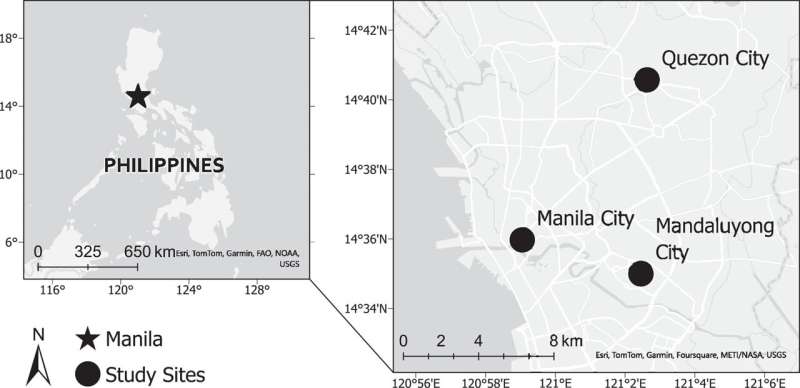This article has been reviewed according to Science X's editorial process and policies. Editors have highlighted the following attributes while ensuring the content's credibility:
fact-checked
trusted source
proofread
Manila confronts its plastic problem through a community-guided protocol

Governments and international organizations have touted the circular economy, in which materials and products stay in circulation for as long as possible, as an antidote to our global plastic problem. (The equivalent of 2,000 garbage trucks of plastic enters oceans, rivers, and lakes every day.) But as wardens of waste management, cities often shoulder the burden of managing plastic pollution.
As a step toward managing plastic waste, 51 communities around the globe have participated in the Circularity Assessment Protocol (CAP). Developed by Jambeck and others, the protocol provides communities with data on circular materials management and local sources of plastic pollution. Most recently, the Philippines' capital region, Metro Manila, an urban agglomerate home to 12.9 million people—and a serious plastic problem—participated in the CAP process.
The work is published in the journal Community Science. Among the authors is a representative from the local organization Save Philippine Seas, which surveyed Quezon City, Manila City, and Mandaluyong City, three localities within the capital region. The organization conducted surveys at retail shops and vendors to document plastic-wrapped items such as snacks, beverages, personal care products, tobacco products, and household supplies.
Collectively, the data buckets portrayed the life cycle of plastics in Manila. The authors identified where plastic originates, how products are designed and used, how waste is collected, and, ultimately, where plastic litter ends up. For instance, they found that 77% of products use multilayer film packaging and that most grocery stores surveyed did not offer alternatives to single-use plastic products.
Additionally, the authors recorded the community's feelings about plastic through interviews and social media analyses. A workshop with local stakeholders provided residents with the opportunity to interact with the study's findings and offer suggestions for reducing plastic waste. For example, residents expressed interest in buying products that don't use plastic packaging or that come in refillable containers.
Although Manila's plastic pollution was comparable in many ways to that of other large cities around the world, the CAP provided community-specific insights and solutions. The authors note that community-level efforts such as these can eventually lead to larger change as more cities address plastic pollution.
More information: J. R. Jambeck et al, The Circularity Assessment Protocol in Cities to Reduce Plastic Pollution, Community Science (2024). DOI: 10.1029/2023CSJ000042
Provided by American Geophysical Union
This story is republished courtesy of Eos, hosted by the American Geophysical Union. Read the original storyhere.





















